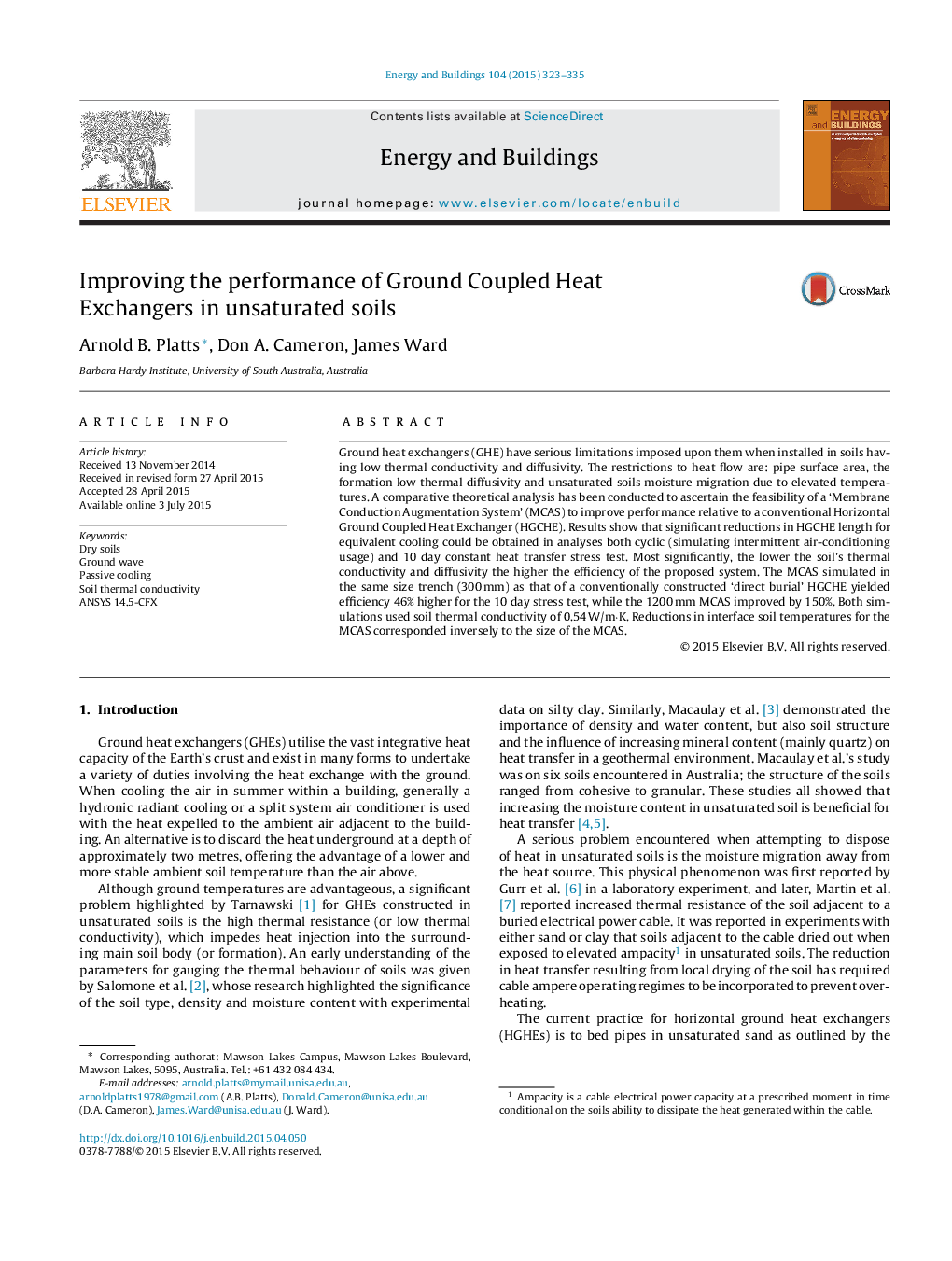| Article ID | Journal | Published Year | Pages | File Type |
|---|---|---|---|---|
| 262432 | Energy and Buildings | 2015 | 13 Pages |
•Significantly higher efficiencies of heat transfer in low thermal conductivity soils.•Significantly reduced GHE lengths and costs for low thermal conductivity soils.•Greatly reduced interface soil temperatures resulting in reducing moisture migration.•Flexible membrane conforms to a square cornered excavated trench.•A variety of design consolidated granular (possibly recycled) materials may be used.
Ground heat exchangers (GHE) have serious limitations imposed upon them when installed in soils having low thermal conductivity and diffusivity. The restrictions to heat flow are: pipe surface area, the formation low thermal diffusivity and unsaturated soils moisture migration due to elevated temperatures. A comparative theoretical analysis has been conducted to ascertain the feasibility of a ‘Membrane Conduction Augmentation System’ (MCAS) to improve performance relative to a conventional Horizontal Ground Coupled Heat Exchanger (HGCHE). Results show that significant reductions in HGCHE length for equivalent cooling could be obtained in analyses both cyclic (simulating intermittent air-conditioning usage) and 10 day constant heat transfer stress test. Most significantly, the lower the soil's thermal conductivity and diffusivity the higher the efficiency of the proposed system. The MCAS simulated in the same size trench (300 mm) as that of a conventionally constructed ‘direct burial’ HGCHE yielded efficiency 46% higher for the 10 day stress test, while the 1200 mm MCAS improved by 150%. Both simulations used soil thermal conductivity of 0.54 W/m·K. Reductions in interface soil temperatures for the MCAS corresponded inversely to the size of the MCAS.
